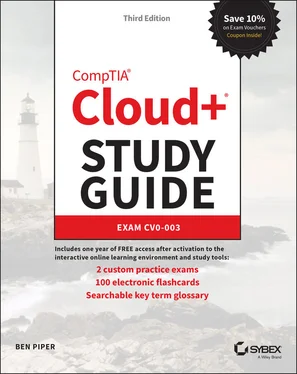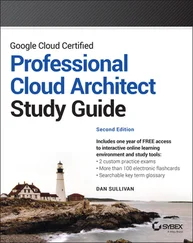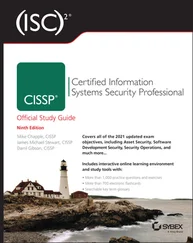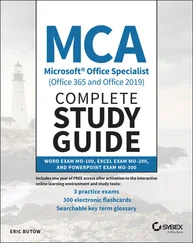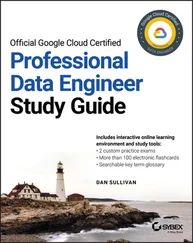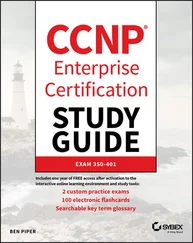Ben Piper - CompTIA Cloud+ Study Guide
Здесь есть возможность читать онлайн «Ben Piper - CompTIA Cloud+ Study Guide» — ознакомительный отрывок электронной книги совершенно бесплатно, а после прочтения отрывка купить полную версию. В некоторых случаях можно слушать аудио, скачать через торрент в формате fb2 и присутствует краткое содержание. Жанр: unrecognised, на английском языке. Описание произведения, (предисловие) а так же отзывы посетителей доступны на портале библиотеки ЛибКат.
- Название:CompTIA Cloud+ Study Guide
- Автор:
- Жанр:
- Год:неизвестен
- ISBN:нет данных
- Рейтинг книги:5 / 5. Голосов: 1
-
Избранное:Добавить в избранное
- Отзывы:
-
Ваша оценка:
CompTIA Cloud+ Study Guide: краткое содержание, описание и аннотация
Предлагаем к чтению аннотацию, описание, краткое содержание или предисловие (зависит от того, что написал сам автор книги «CompTIA Cloud+ Study Guide»). Если вы не нашли необходимую информацию о книге — напишите в комментариях, мы постараемся отыскать её.
, expert IT Ben Piper delivers an industry leading resource for anyone preparing for the CompTIA Cloud+ certification and a career in cloud services. The book introduces candidates to the skills and the competencies critical for success in the field and on the exam.
The book breaks down challenging cloud management concepts into intuitive and manageable topics, including cloud architecture and design, cloud security, deployment, operations and support, and cloud troubleshooting. It also offers practical study features, like Exam Essentials and challenging chapter review questions.
Written in a concise and straightforward style that will be immediately familiar to the hundreds of thousands of readers who have successfully use other CompTIA study guides to further their careers in IT, the book offers:
Efficient and effective training for a powerful certification that opens new and lucrative career opportunities Fully updated coverage for the new Cloud+ CV0-003 Exam that includes the latest in cloud architecture and design Access to the Sybex online learning center, with chapter review questions, full-length practice exams, hundreds of electronic flashcards, and a glossary of key terms Perfect for everyone preparing for the
certification, this book is an ideal resource for current and aspiring cloud services professionals seeking an efficient and up-to-date resource that will dramatically improve their ability to maintain, secure, and optimize cloud environments.
